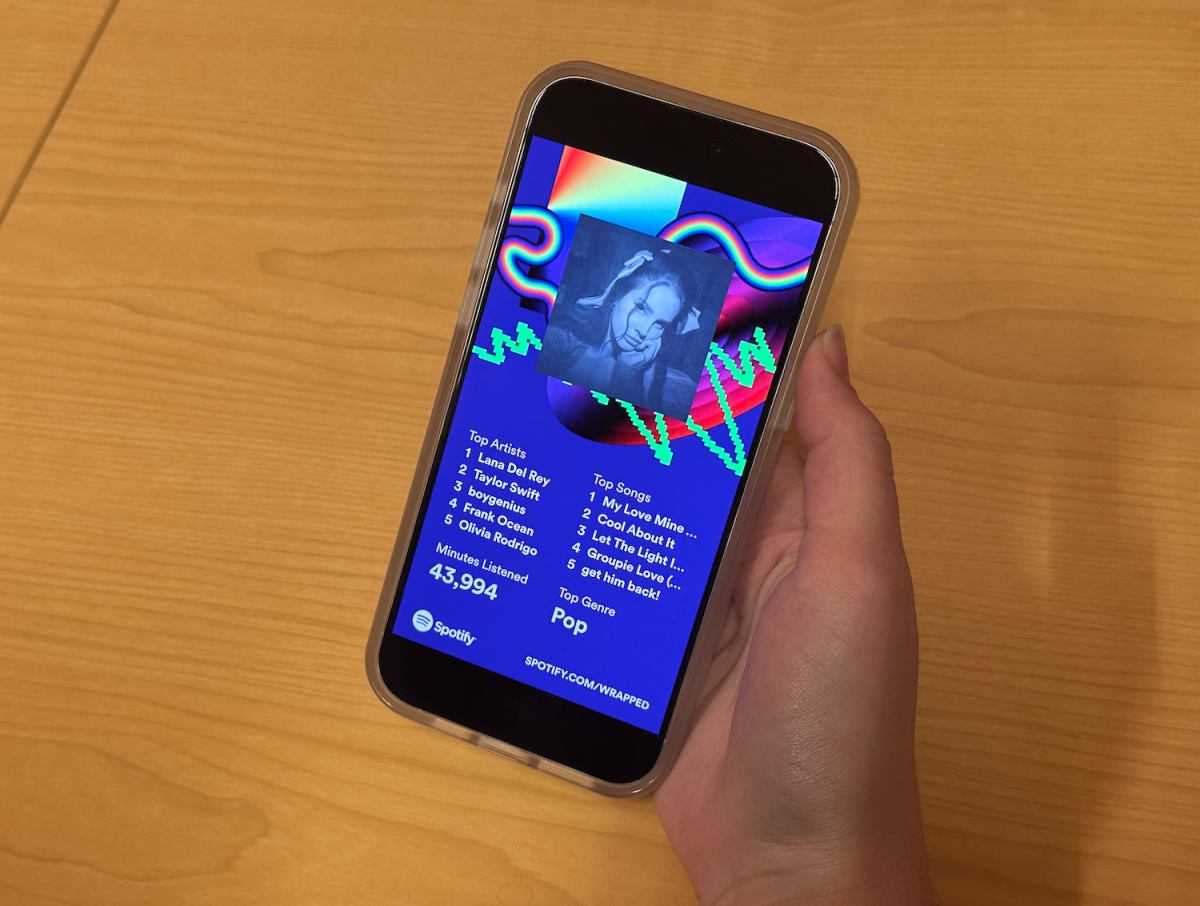Record Runner, a long, narrow record and CD shop in the West Village, houses decades worth of songs. Visitors flip through crates of record sleeves, from Otis Redding and Led Zeppelin to Taylor Swift and the Red Hot Chili Peppers. John Pita, the longtime owner of Record Runner, believes the distinctness of record listening is something to be celebrated.
“With a record, you have to get up and turn it over,” Pita said, standing before shelves upon shelves of retro record covers. “You have to move it around to pick a tune. There is physicality … it makes you listen.”
Streaming is now the most popular mode for listening to music today. Spotify, launched in 2008, is the top music streaming service with 226 million paid subscribers and 574 million active users. The app offers a distinct approach to audio, providing what feels like an infinite amount of music. 32% of its users are between 18 and 24, and 31% are between 25 and 34.
Specialized features like Spotify Wrapped and personalized playlists can collect data to curate content hyper-specific to the user. The ability to know the statistics of our music taste and how it is evolving, all while being able to share it on social media easily, makes music streaming ever so appealing to users. But how does this new form of immediate internet access affect our perception of music and compare to other listening experiences?
Nayeli Rodriguez, an NYU sophomore and a writer for WNYU’s music magazine, STATIC, has been a longtime fan of Spotify’s features. At the moment, she has 253 playlists and counting.
“I really like that it knows you personally. My Discover Weekly shows me something new during the week,” Rodriguez said. “There are so many personalized playlists because we all get tired of our playlists. It’s organized. And we don’t have to do anything — it’s all just ready for you.”
For Rodriguez, listening to music is easier than it ever was for her parents. They grew up poor, she said, and access to music was limited.
“If you didn’t have the money, you didn’t have the money,” she explained. “And then you were totally shut out of a good album or good song. Spotify is affordable and accessible.”
Not only do people have more access to music, but they are also listening to it more than ever before. Music often accompanies a three-minute walk to the laundromat or romanticizes a neighborhood stroll.
“You don’t have to wait until you’re home or somewhere that has a CD player or desktop computer. Every time I walk to and from somewhere, or on the subway, and I’m alone, I have to have music on because I have to. Like I must,” Rodriquez continued.
Esteban Samayoa, a vinyl fan and longtime radio show host at Santa Clara University, remembers the experience of buying records when he was younger.
“We would have to wait in line and invest $15 in buying a record,” he recalled. “And then you didn’t even know if you’d like it. You bet on it.”
A record buyer trusts the artist, while Spotify listeners don’t need to take this same chance. For the price of one album, users can instead get unlimited monthly music. Now, it seems as if listeners know less about individual artists because there’s access to so many of them.
There is just something about walking to a local record shop, knowing who works there, and sifting through stock paper record sleeves until you find that one record. You commit to it, walking it to the counter and making small talk with someone about the artist. Then, when you get home, you pull the record from its casing and arrange it on your record player, savoring that first listen. Now, new music simply appears on our phones, like magic.
Howard Singer, an NYU professor teaching Data Analysis in the Music Industry, finds pros and cons with streaming.
“People rediscover Fleetwood Mac; they discover Led Zeppelin,” he said. “And that’s great. They don’t have to go buy those albums or dig them out of crates from their parent’s basement.”
But he believes the concept of an album has weakened; people skip through songs rather than understanding one song as a piece of a whole entity.
“If you had spent $4.99 to buy a single from your favorite artist and brought it home and listened to it, you’ve spent your money — you want to get your money’s worth,” Singer said. “Now, you paid your money; it’s all the same. Why wouldn’t you switch a song if you don’t like it?”
Although streaming services remain the most popular mode for music listening, Singer pointed out that more and more people are buying records — an outlier phenomenon in an all-digital world.
“Your colleagues at NYU are buying vinyl,” Singer said. “It’s this desire to own something and have a collectible. Something like 50% to 60% of people who buy the records don’t own a record player. They’re not buying the music experience. They’re buying the collectible and supporting the artist.”
Some people, like Pita, still listen to their music lounging by a record player, and some with wired or unwired headphones on early-morning commutes. From CDs to cassettes, boomboxes to Walkmans, the ways we listen to music have changed dramatically.
“It’s insane. Look at this! You want to have it, you know? You wanna own it. You wanna look at it. It’s everything,” Pita continued, shaking a record by The Beatles in the air. He suggests that holding music — physically, in our hands — assigns value to it in a way that digital files don’t.
Perhaps Pita was right. People notice there is something lost by not holding music, or really owning it. The sensation of scrolling through songs may never match the feeling of gliding a finger along a record’s grooves.
“They make an evening out of a record,” Pita said while describing watching his friends listen to music. “They make dinner and have wine. And they really listen to the whole record, you know what I mean? There’s a kind of romantic part of it.”
Contact Maisie McDermid at [email protected].
























































































































































